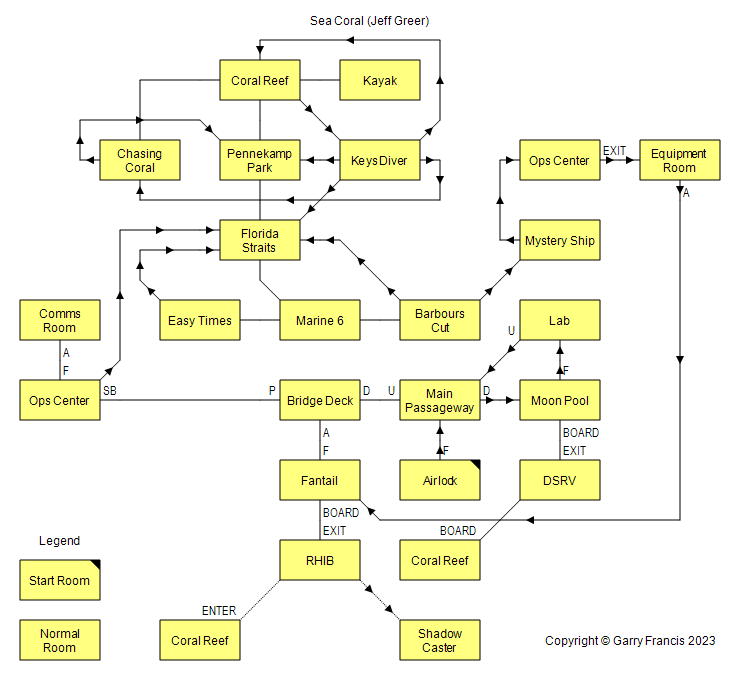About 10 years ago, I put together a GUI for developing TADS i-f. Here it is, on the Way Back Machine.
Alas, like so many, it hit 95% complete, then fell by the wayside.
However, I am thinking of using some of the same functionality in a new app.
Basically, I want to save paper. As you explore, the app will draw what you know of the map, and passages between rooms. As you see items, it will add them to the map, take them, it will move them to inventory, drop them, it will add them back to the map.
Question #1: would such an app be useful, or do we prefer to write on paper?
Question #2: if so, does it already exist? I searched for it, but can’t find it.
Question #3: the biggy - how would you implement it? I see three possibilities.
-
fork the TADS code
-
ask the TADS developer to add hooks for utilities or plugins
-
just tune the interpreter as-is and parse its output. This has the advantage of working with other systems, not just TADS, and the disadvantage of having to guess every synonym for “look” , plus “drop/discard/throw/chuck/eject/etc”
In broad terms, is the idea worth it, and how would you go about it?
